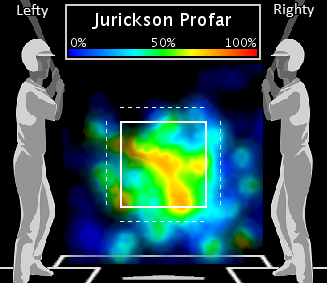Fister Takes Impeccable Command to D.C.
 David Golebiewski |
David Golebiewski |  Tuesday, December 3, 2013 at 5:14PM
Tuesday, December 3, 2013 at 5:14PM
Judging from the trade package the Tigers received from the Nationals in exchange for Doug Fister, you might think he's just some back-of-the-rotation schlub. Instead, it appears that Washington GM Mike Rizzo just landed one of the game's best starters, still two years away from free agency, for a good-not-great pitching prospect (Robbie Ray), a potential lefty specialist (Ian Krol), and a versatile bench bat (Steve Lombardozzi).
Fister doesn't look like an ace, lobbing 89 MPH fastballs and a cornucopia of breaking and offspeed stuff toward home plate. But don't mistake a lack of velocity for a lack of talent. Over the past three seasons, Fister ranks eighth among all starting pitchers in Baseball Reference Wins Above Replacement (12.6), and his park-and-league-adjusted ERA (24 percent above average) places tenth. Fister bested now former teammate and newly crowned AL Cy Young Award winner Max Scherzer in both categories.
The 29-year-old righty produces elite results with pedestrian stuff thanks to a nearly unparalleled ability to throw strikes. Fister has issued a mere 1.8 walks per nine innings pitched since 2011, tying him with new rotation mate Jordan Zimmermann for seventh among starters tossing at least 500 frames over that time frame. He doesn't just flood the strike zone, though -- he avoids the fat part of the plate like few others. Take a look at Fister's pitch location over the past three seasons:
Fister's pitch location, 2011-2013
From 2011-13, MLB starters threw an average of 23.6 percent of their pitches to the horizontal middle of the strike zone. Fister, by contrast, threw just 20.8 percent of his pitches down the middle. Among AL starters throwing at least 6,000 pitches since 2011, only Mark Buehrle (20.3 percent) and Jon Lester (20.7) offered hitters fewer cookies.
Why does that matter? Pitches thrown over the middle of the plate get hammered, with hitters slugging a collective .484 against those offerings from 2011-13. Pitchers fare far better when they bust hitters inside (.412 slugging percentage) or paint the outside corner (.330).
The Mariners might be absolved for not fully appreciating Fister's then-burgeoning talents, shipping him to Detroit for a gaggle of so-so-prospects during a 2011 season in which the club lost 95 games. But the Tigers, still equipped to make a World Series run with Justin Verlander, Scherzer, Anibal Sanchez and an in-his-prime Miguel Cabrera, get no such benefit of the doubt. While Drew Smyly appears ready for a rotation spot, Detroit surrendered one of the game's top arms, making far less than he would garner on the open market, for three none-elite youngsters. Fister might be a soft tosser, but his superb command makes him every bit as valuable as more heralded fire ballers.
 Nationals,
Nationals,  Tigers,
Tigers,  Trades | tagged
Trades | tagged  Detroit Tigers,
Detroit Tigers,  Doug Fister,
Doug Fister,  Washington Nationals,
Washington Nationals,  trade
trade

